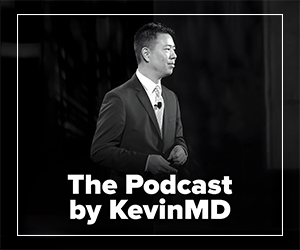Many drug ads in the Journal of the American Medical Association (JAMA) during the 1950s, 1960s, and 1970s would offend today.
In an ad for Valium, we are told that the woman pictured (“Jan”) is “psychoneurotic” because she is unmarried at age 35. “You probably see many such Jans in your practice,” says the ad—“The unmarrieds with low self-esteem. Jan never found a man to measure up to her father.”
Valium was …
Read more…
“How dare you suggest I/my son is not sick?” “Stop invalidating the lived experiences of millions of people!” “Able-bodied people like you have no right to report this.” “How dare you suggest my medication has risks?” “You’re not taking my drugs!”
The tweets above are just some of the vehement responses I have received as a health reporter over the years for daring to report that some drugs have a downside …
Read more…
It is a macabre fact. The easing of COVID shutdowns has brought back mass shootings in the U.S. With almost no packed schools, movie theaters, malls, airports, and fewer packed workplaces during the last year, mass shootings did not lead the news. Now they are back.
This month’s shootings at Atlanta spas and at a Boulder, Colorado grocery store have jolted the nation back into the banality and unpredictability of gun …
Read more…
Smithfield Foods, the nation’s largest pork producer, closed its Sioux Falls, SD, slaughterhouse after many Smithfield employees grew sick. Tyson Foods closed its Columbus Junction, IA pork slaughterhouse in April, according to the Wall Street Journal.
While many U.S. slaughterhouses are closing, pork slaughterhouses and pork producers are bracing for another coronavirus challenge: a virus called Severe Acute Diarrhea …
Read more…
Recently the Wall Street Journal reported on how many young people are now seeking “accommodations” at work for their anxiety, PTSD, depression, and other mental conditions.
The article provoked a lively discussion split largely on age lines. While older people accuse Gen Z members of being “emotional hemophiliacs,” Gen Z members often say they have real, palpable “mental illnesses” and need extra time to complete their …
Read more…
“Boxed warnings” or “black boxes” are the strictest FDA label warnings. They appear on cigarettes, fluoroquinolones (for tendon rupture), Lamictal (for SJS and TEN), Accutane (birth defects), and other products with well-known risks.
The industry obviously dislikes black boxes since they reduce sales (though their lobbyists charge the boxes “confuse” and “unnecessarily alarm” patients).
So it was no surprise that when the Read more…
It is a fluke of the news cycle that if we don’t hear a product warning frequently, we can “forgive” that product and think it has somehow become safe. While no one would “forgive” cigarettes, lead in drinking water or mercury in tuna, the public has definitely softened on the danger of hormone replacement therapy (HRT) for menopause. So it is noteworthy that a recently released …
Read more…
Before direct-to-consumer ads, physicians tried to reassure patients they were probably fine. Today, drug ads and online symptom checkers do just the opposite. The most insidious are “unbranded” ads that scare people about a disease without mentioning the drug they are trying to sell. Notable unbranded disease campaigns sell the obscure exocrine pancreatic insufficiency, shift work sleep disorder, and non-24-hour, sleep-wake disorder. Unbranded advertising is designed to appear like a …
Read more…
Antibiotics serve two purposes for large-scale meat farmers. They allow them to raise animals in unsanitary, confined conditions that would otherwise kill or sicken them and they allow factory farmers to use less feed. How much less feed? Without antibiotics, 175,550 more tons of feed would be needed to grow U.S turkeys, lamented Michael Rybolt of the National Turkey Federation at 2008 hearings when the FDA tried …
Read more…
The Trump administration has proposed that insurance plans providing drug coverage to Medicare beneficiaries will no longer be forced to cover six hitherto “protected” drug classes. The classes — which include drugs for psychiatric conditions, cancer and immune diseases –– are among the priciest of all drugs and account for as much as 33 percent of total outpatient drug spending under Part D of Medicare.
Under …
Read more…
There are now more than 700 million obese people worldwide, 108 million of them children, reported the New York Times in 2017. In Brazil, food giant Nestle sends vendors door-to-door hawking its high-calorie junk food and giving customers a full month to pay for their purchases. Nestle calls the junk food hawkers, who are themselves obese, “micro-entrepreneurs.”
Big Food is increasingly targeting poor countries as “emerging markets” …
Read more…
It is not clear whether Anthony Bourdain and Kate Spade were getting drug treatment for depression. What is clear is that suicide in the U.S. has never been higher even as the use of SSRI antidepressants has also never been higher. One in every eight American adults recently took an antidepressant says the CDC and the number is only rising. Are the drugs working?
The use of …
Read more…
Long before the Internet and direct-to-consumer advertising, the medical profession tried to reassure people about their health concerns. Remember “take two aspirins and call me in the morning?”
Flash forward to today’s online “symptom checkers.” They are quizzes to see if someone has a certain disease and exhortations to see their doctor even if they feel fine. Once drug makers discovered that health fears and even hypochondria sell drugs, there seems …
Read more…
More than a decade ago, the job of the pharmaceutical rep was enviable. Direct-to-consumer advertising pre-sold many drugs so doctors already knew about them. Medical offices welcomed the reps who were usually physically attractive and brought lunch. In fact, reps sometimes had their own reception rooms in medical offices.
By 2011 thanks to drug safety scandals and new methods of marketing, the bloom had fallen off the pharma …
Read more…
One night in 1997, as Americans watched Touched by an Angel they were touched by something else unexpected: an ad for a prescription allergy pill called Claritin, sold directly to patients.
Prescription drugs had never been sold directly to the public before — a marketing tactic called direct-to-consumer or DTC advertising. How could average people, who certainly had not been to medical school, know if the medication was appropriate or safe …
Read more…
Where did the medical community get the idea that Vioxx, Trovan and Baycol were safe and the benefits of Prempro, Neurontin and bisphosphonates outweighed their risks? From research published in medical journals written by drug companies or drug-company funded authors.
Scratch the surface of many blockbuster drugs that went on to be discredited, or even withdrawn as risks emerged, and an elaborate “publication plan” emerges, developed by …
Read more…
An excerpt from Born With a Junk Food Deficiency, (Prometheus Books, 2012).
Can anyone remember life before Direct-to-Consumer (DTC) advertising with its notorious “Ask Your Doctor” ads? The only thing laypeople knew about prescription drugs came from the ads they peeked at in the Journal of the American Medical Association (JAMA) in the doctor’s waiting room. The ads were full of vaguely ominous terms—nulligravida? hemodialysis?—as well as side effects …
Read more…









![New data reveals the massive pay gap for women ER doctors [PODCAST]](https://kevinmd.com/wp-content/uploads/Design-4-190x100.jpg)